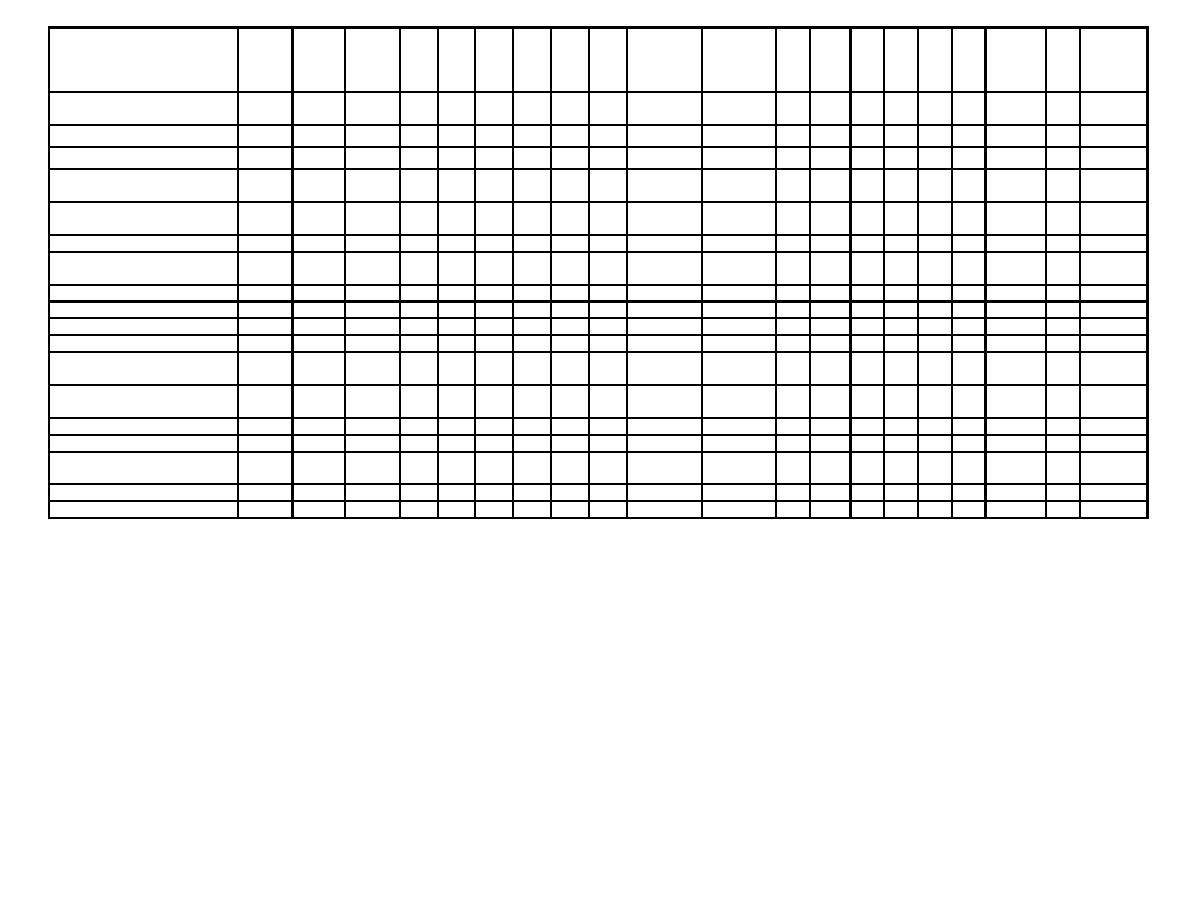
7
8
Class or Division
Notes
1.1,
1.3
1.4
1.5
1.6
2.1
2.2
2.3 gas
2.3 gas
3
4.1
4.2
4.3
5.1
5.2
6.1
liquids
1.2
Zone A
Zone B
liquids
only
PG I
Zone A
Explosives
1.1 and
A
X
X
X
X
X
X
X
X
X
X
X
X
X
*
*
*
*
*
1.2
Explosives
1.3
X
X
X
X
X
X
X
X
X
X
*
*
*
*
*
Explosives
1.4
O
O
O
O
O
O
O
*
*
*
*
*
Very insensitive
1.5
A
X
X
X
X
X
X
X
X
X
X
X
X
X
*
*
*
*
*
Extremely insensitive
1.6
*
*
*
*
*
Flammable Gases
2.1
X
X
O
X
X
O
O
O
Non-Toxic,
2.2
X
X
non-flammable gases
Poisonous gas Zone A
2.3
X
X
O
X
X
X
X
X
X
X
X
X
Poisonous Gas Zone B
2.3
X
X
O
X
O
O
O
O
O
O
O
O
Flammable Liquids
3
X
X
O
X
X
O
O
X
Flammable Solids
4.1
X
X
X
O
X
O
Spontaneously combustible
4.2
X
X
O
X
X
O
X
X
materials
Dangerous when wet
4.3
X
X
X
X
O
X
O
materials
Oxidizers
5.1
A
X
X
X
X
O
O
X
O
Organic Peroxides
5.2
X
X
X
X
O
X
O
Poisonous liquids
6.1
X
X
O
X
O
X
X
X
X
X
X
X
PG I Zone A
Radioactive Materials
7
X
X
O
Corrosive liquids
8
X
X
O
X
X
O
O
X
O
O
O
X
Instructions for using the segregation table for hazardous materials are as follows:
(1) The absence of any hazard class or division or blank space in the Table indicates that no restrictions apply.
(2) The letter "X" in the Table indicates that these materials may not be loaded, transported, or stored together in the same transport vehicle or
storage facility during the course of transportation.
(3) The letter "O" in the Table indicates that these materials may not be loaded, transported, or stored together in the same transport vehicle or
storage facility during the course of transportation unless separated in a manner that, in the event of leakage from packages under conditions normally
incident to transportation, commingling of hazardous materials would not occur. Notwithstanding the methods of separation employed, Class 8 (corrosive)
liquids may not be loaded above or adjacent to Class 4 (flammable) or Class 5 (oxidizing) materials; except that shippers may load truckload shipments of
such materials together when it is known that the mixture of contents would not cause a fire or a dangerous evolution of heat or gas.
(4) The "*" in the Table indicates that segregation among different Class 1 (explosive) materials is governed by the compatibility table in
paragraph (f) of 49CFR174.81.
(5) The note "A" in the second column of the Table means that, notwithstanding the requirements of the letter "X", ammonium nitrate fertilizer may be
loaded or stored with Division 1.1 (Class A explosive) or Division 1.5 (blasting agents) materials.
(6) When the 172.101 Table or 172.401 of 49 CFR requires a package to bear a subsidiary hazard label, segregation appropriate to the subsidiary hazard
must be applied when that segregation is more restrictive than that required by the primary hazard. However, hazardous materials of the same class may be
stowed together without regard to segregation required by any secondary hazard if the materials are not capable of reacting dangerously with each other
and causing combustion or dangerous evolution of heat, evolution of flammable, poisonous, or asphixiant gases, or formation of corrosive or unstable
materials
Figure 6-2. Segregation and Separation Chart of Hazardous Materials for Rail Shipments


